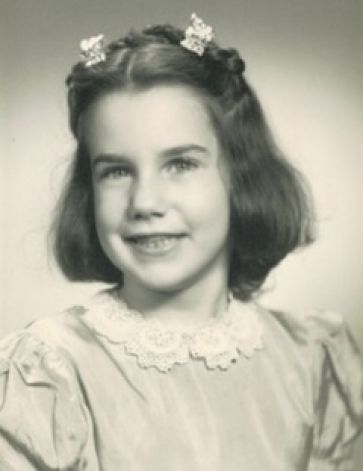
At first glance, the drawing and photograph shown above are nothing remarkable. They show a fashion illustration and then a finished ensemble. It's not clear which came first — were the clothes based on the drawing, or the other way around? — but it's obvious that they show the same outfit.
Lurking beneath these clothing designs, however, is a fascinating story that's very, very Permanent Record.
Here's the deal: In 1997, a Milwaukee man named Burton Strnad was cleaning out his parents' house after having moved his mother to an assisted-living facility. He found a number of interesting artifacts, including a 1939 letter from his father's cousin, Paul Strnad, a Jew who at the time was in Nazi-occupied Czechoslovakia. The letter asked if the Milwaukee family could sponsor Paul and his wife, Hedvika, as they sought to immigrate to America. Hedvika was a dressmaker, and the letter was accompanied by eight of her drawings, to show that she was talented. The letter was also accompanied by this photo of Paul and Hedvika:

Unfortunately, as it turned out, Paul and Hedvika were unable to leave Czechoslovakia and perished in the Holocaust.
Burton Strnad — the man who found the letters and drawings in his parents' house — donated them to the Jewish Museum Milwaukee, where they became part of the museum's permanent collection. It wasn't until more than a decade later that the museum staff came up with the idea of bringing Hedvika Strnad's designs to life by actually making the clothes she had drawn and using them as the basis of an exhibit. That exhibit, called "Stitching History From the Holocaust," opened a few weeks ago and will run through next February.
The museum enlisted the Milwaukee Repertory Theater's costume department to create the clothing. The costumers did research to ensure that they were using period-appropriate fabrics that would have been available to Hedvika at the time. In an inspired touch, they also created a labeldesign featuring a "Hedy" signature, based on the handwriting shown on some of Hedvika's drawings:

And so this dressmaker's designs have finally been brought to life, seven decades after she herself died. To learn more about this fantastic story and see more of the drawings and dresses, check out this article and the exhibit's website.















